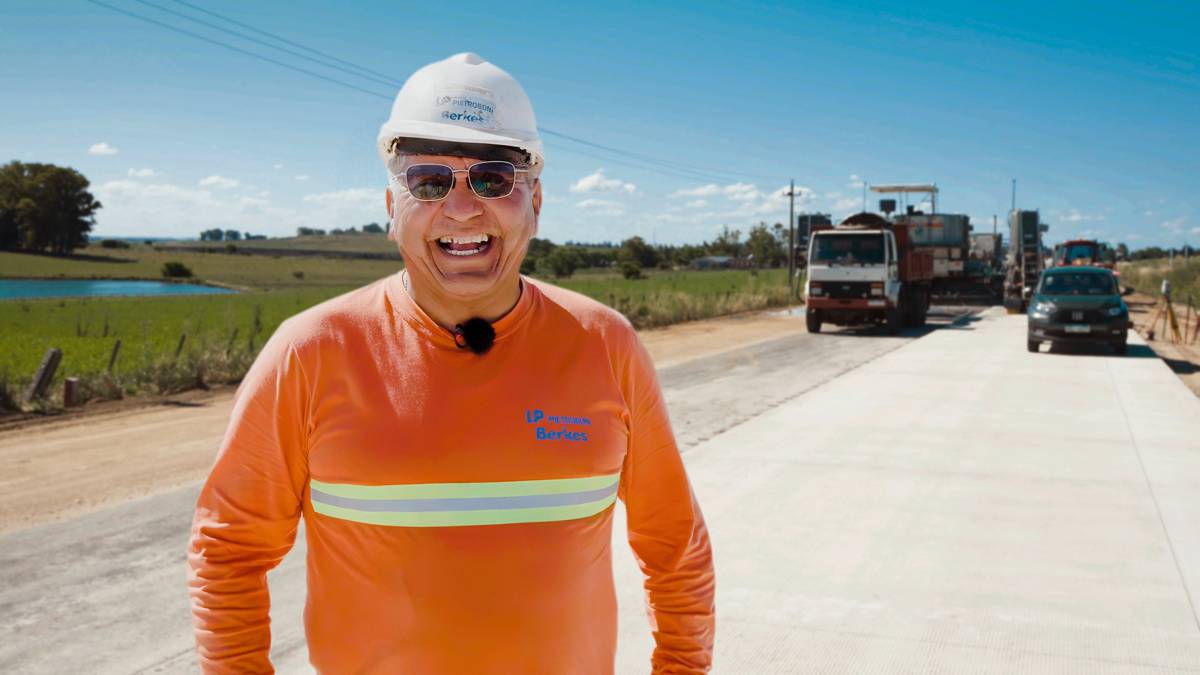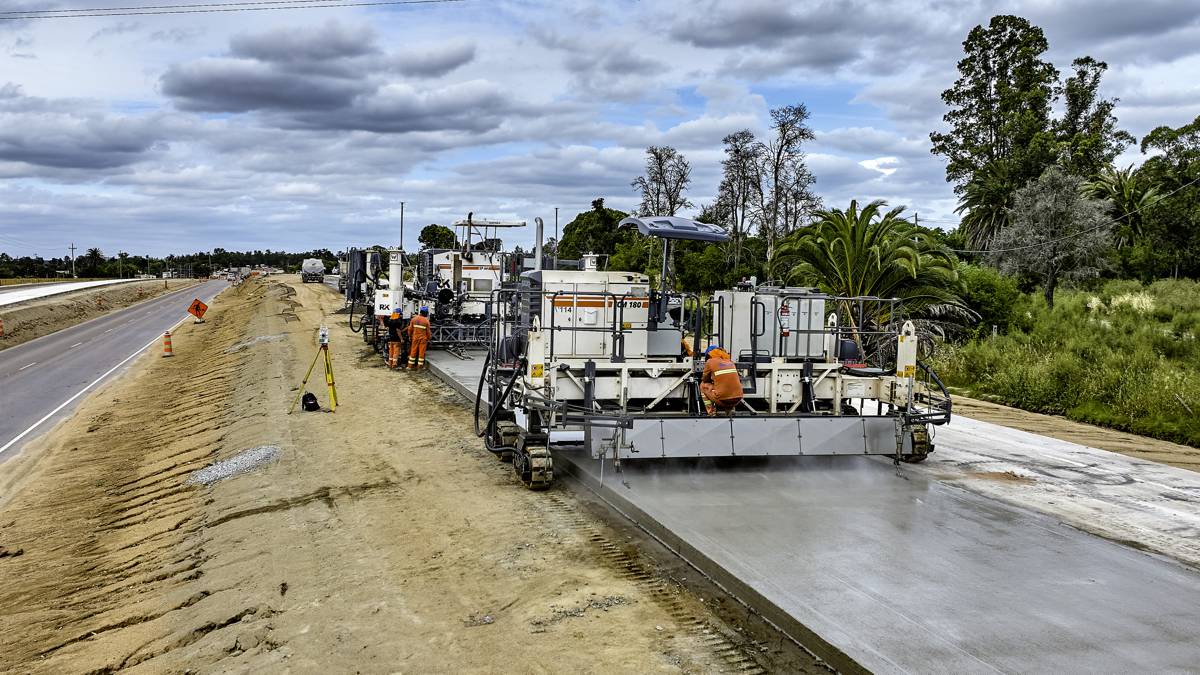Transforming Uruguay’s Ruta 5 to Modernise Key Infrastructure
Nestled in the bustling heart of Montevideo lies the Column of Peace on Plaza de Cagancha, a historic landmark marking kilometre zero for Uruguay’s National Routes.
From here, five vital highways, known fondly as the “Five Fingers,” extend into the country’s vast terrain, connecting urban centres to the capital. Among these crucial arteries is Ruta 5, which spans from Montevideo to Rivera on the Brazilian border. It’s a critical route, linking the nation’s capital to key northern cities.
However, the single-lane stretch of Ruta 5 has long been a bottleneck, stifling economic potential. Recognising this, the government embarked on a transformative project to widen a crucial 75-kilometre section of the highway. This ambitious endeavour is not just about adding more lanes—it’s about enhancing safety, efficiency, and long-term sustainability.
Teaming Up for Success: Collaboration at its Best
Four construction firms—INCOCI, R&K – Berkes, L.P. Pietroboni, and Stiler—joined forces to tackle this massive infrastructure challenge. The collaboration was a testament to the power of teamwork in the construction industry, especially on a project of such national significance. The contractors synchronised their operations seamlessly, ensuring that every kilometre of highway met the highest standards.
What set this project apart was the involvement of Interagrovial, the local distributor for Wirtgen Group and John Deere machinery. This partnership provided the construction crews with top-of-the-line equipment, including three Wirtgen SP 64 slipform pavers and TCM 180 texture curing machines, ensuring efficient paving and a smooth, durable surface.
“We strive to secure the long-term success of our customers,” noted an Interagrovial spokesperson. “By standing alongside them with efficient systems and reliable equipment, we contribute to Uruguay’s future infrastructure.”

Revolutionising Road Construction with Innovative Paving Techniques
One of the game-changers in this project was the use of Wirtgen’s integrated dowel bar inserter (DBI) technology. Traditional concrete roadways often require pre-placed reinforcement like dowel baskets, which can significantly limit space and manoeuvrability. The SP 64’s DBI capability streamlined this process, inserting dowels and tie bars automatically across the full paving width.
This automated system allowed concrete to be poured directly in front of the machine, saving precious time and reducing logistical headaches. By freeing up space, construction vehicles could move unhindered, increasing overall site efficiency and reducing delays.
The use of DBI also brought a slew of other benefits:
- Increased process reliability: Precise placement of reinforcement bars ensures a stronger and more durable road surface.
- Improved site safety: Less manual handling of steel reinforcements lowers the risk of on-site accidents.
- Enhanced project speed: The streamlined process led to faster project completion without compromising quality.
Leveraging 3D Technology for Precision and Flexibility
Gone are the days of cumbersome physical stringlines dictating the progress of slipform pavers. Instead, the construction team opted for cutting-edge 3D control technology, enabling a virtual stringline system. This digital approach utilised total stations and prisms mounted on the paving machines to guide the project with pinpoint accuracy.
The virtual stringline system came with several key advantages:
- Optimised space management: Without physical barriers, crews and machinery had more room to operate, reducing congestion.
- Smooth concrete delivery: Tipper trucks could offload concrete without worrying about damaging physical stringlines.
- Superior road smoothness: Thanks to real-time adjustments, the project achieved an exceptional International Roughness Index (IRI) rating, ensuring a smooth and durable road surface.
By combining these advanced technologies, the Ruta 5 project achieved not only operational efficiency but also a higher-quality finish, with the road expected to withstand the test of time.

Pushing Boundaries: Enhancing Site Logistics and Safety
The highway expansion project was not just about widening the road; it was about rethinking how infrastructure projects are managed. By embracing digital solutions, the contractors ensured that every aspect of the project, from concrete delivery to machine operation, ran like a well-oiled machine.
Using the Wirtgen SP 64 slipform pavers with 3D control systems allowed for dynamic adjustments on the fly, which improved both safety and efficiency. This flexibility enabled the teams to adapt to challenges without interrupting the flow of work, proving that technology, when used correctly, can revolutionise road construction.
Moreover, the use of texture curing machines ensured that the concrete surface achieved optimal curing conditions, resulting in a longer-lasting, skid-resistant roadway. The project managers lauded the collaboration between all parties involved, highlighting the efficiency gains and quality improvements achieved.
A Snapshot of the Ruta 5 Expansion
The Ruta 5 project spanned two main sections:
- Peaje Mendoza to Florida: A 30 km stretch that kicked off the project.
- Florida to Sarandí Grande: A 45 km section completed as part of phase two.
Key stats included:
- Overall paving width: 15.6 metres
- Lane width per side: 3.9 to 5 metres
- Paving height: 220 mm, with integrated steel reinforcement for added durability
The combination of cutting-edge technology and robust collaboration resulted in a modern, efficient roadway that is set to enhance the connectivity between Uruguay’s northern and southern regions.

A New Chapter in Uruguay’s Infrastructure Journey
With the successful completion of the Ruta 5 expansion, Uruguay is setting the stage for a new era of infrastructure development. This project underscores the importance of leveraging technology and collaboration to tackle large-scale challenges in the construction sector.
By integrating digital solutions, automation, and local expertise, the Ruta 5 initiative has become a model for future projects in the region. Not only does it improve transportation efficiency, but it also demonstrates how sustainable construction practices can be seamlessly integrated into national infrastructure plans.
As the newly expanded highway opens to the public, it’s clear that the road ahead is smoother, safer, and more connected. For Uruguay, this is just the beginning of a journey towards a more resilient and modern infrastructure network, paving the way—quite literally—for future generations.




















